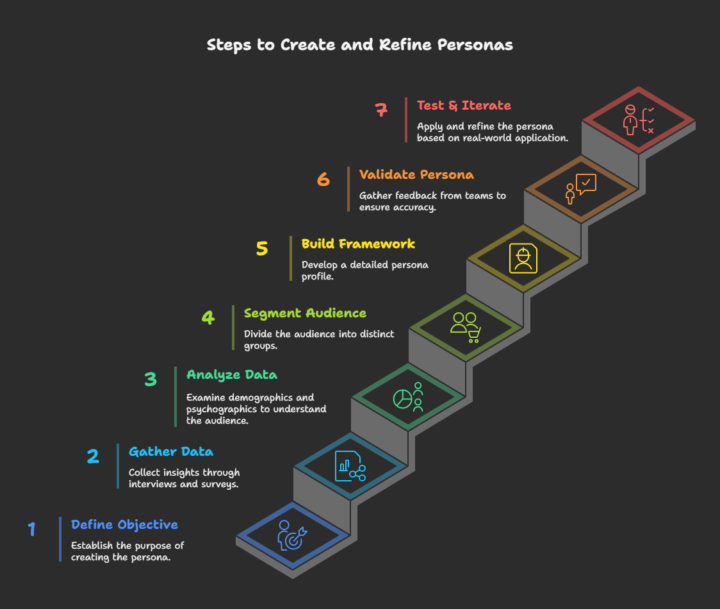
Write something
You don’t need louder. You need truer.
What I was building LOOKED right, but didn’t FEEL right. I used to think success meant having the cleanest funnel, the most structured calendar, or the most “valuable” offer. I studied what top creators were doing. I stacked automations. I planned out every step. And yeah, on paper, it looked tight. But… Even with all that in place, I felt off. I was not burnt out. I just felt... disconnected. Like I was building what I thought I should build. Not what I actually believed in. And that disconnect leaks into everything: → How you show up → How you price → How confident you sound when you explain your work The breakthrough wasn’t more strategy. It wasn’t better branding or tighter copy. It was rebuilding from a place of truth, not pressure. Building something I could say out loud, clearly and calmly, even when no one was clapping. I’m sharing this because I know some of you are in the messy middle: - Rewriting your bio (again) - Questioning your niche (again) - Wondering if you should just start over (again) You don’t need louder. You need truer. That’s the game now. And once that lands? Everything else gets easier. Just something I wish I had heard earlier...

You’re probably making your offer look worse than it is
I caught myself doing this the other day. I was describing one of my programs and said, “It only takes about 4 hours per week to get through.” Sounds reasonable, right? But then I realized... I just said “4 hours of work.” What if I’d said: “It’s a focused, step-by-step system you can finish in one focused hour a day. And, it actually saves you 10+ hours a week of spinning your wheels.” Same offer. Different perception. That’s The Framing Effect. It’s what makes “1% fat” sound gross… but “99% fat free” sound healthy. It’s what turns a “coaching call” into a “personal roadmap session.” It’s what makes someone feel like they’re buying speed instead of just paying for info. Alex Hormozi breaks this down hard in the Naming and Value Equation chapters of $100M Offers. Your offer might already be amazing, but are you describing it in a way that triggers doubt or desire? This is how I look at my offers before I even talk about them: - Look at how I describe myproduct or service - Find any phrases that highlight the cost, time, effort, or risk - Flip them into value, speed, ease, or certainty Real talk: 9 out of 10 offers don’t need to be better, they just need to sound better.

You’re Already Successful. Just Hit "Publish"
"𝑌𝑜𝑢'𝑟𝑒 𝑠𝑢𝑐𝑐𝑒𝑠𝑠𝑓𝑢𝑙 𝑎𝑠 𝑠𝑜𝑜𝑛 𝑎𝑠 𝑦𝑜𝑢 𝑠𝑒𝑛𝑑 𝑦𝑜𝑢𝑟 𝑤𝑜𝑟𝑘 𝑜𝑢𝑡 𝑖𝑛𝑡𝑜 𝑡ℎ𝑒 𝑤𝑜𝑟𝑙𝑑." – Rick Rubin Earlier in life, I thought success was something that happened later. After the validation. After the big numbers and virality. After the work had been “perfected.” So I kept holding back. I told myself I needed to refine things just a little more. I needed to be sure it was good enough, or it was the right moment. But in a way... I wasn’t waiting for 𝐭𝐡𝐞 𝐰𝐨𝐫𝐤 to be ready. I was waiting for 𝐦𝐲𝐬𝐞𝐥𝐟 to feel ready. And that moment never came. Because no amount of tweaking, refining, or overthinking can prepare you for the feeling of putting something out there and realizing: "now, this in out in the world." And yet, every single time I finally shared something, even when I felt like it wasn’t “there” yet, I felt like I moved forward. Each time I hit publish, my work becomes real. It exists outside of me. I guess that's what Rick Rubin meant. Success isn’t some finish line far away. It’s not in the likes, the comments, or the virality. Success happens the moment you let your work go public, give it a chance to find its people, to do what it was meant to do. Of course, not everything I’ve made and shared has been great. (looking at you, YouTube videos ^_^) I’ve gotten better and grown. And helped at least one person, hopefully. That’s the real win. So if you’ve been sitting on something, waiting for the "perfect” moment (that never happens), put it out there. Let it be messy. Let it be unfinished. Let it exist. Because the only reason you’ve learned from those ahead of you is that they pressed publish, despite their own uncertainties. And now, by sharing your work, you’re doing the same for those coming up behind you. Your success has already started 🚀

How I'm using AI to speed up my Offer Creation
Lately I've been using chatGPT to help out in drafting different offers. (The free version works great, btw) The thing with AI tools is that the quality of the output you get will HEAVILY depend on the input that you give it. ## Generally, the more specific the prompt, the more relevant the AI result. ## Personally, I prefer annual membership high ticket offers (1k+) designed to: - minimize churn (members cancelling after joining) and - with high stickiness, but that are also - fun for me to deliver And yes, I've used the above as inputs to the AI tool and got some handy suggestions that I will offer to prospects and further refine on. ~~~~~~~ Another thing was to actually chat with the AI by asking it to come up with different avatars to match my interests but which I hadn't originally thought about (ex. business entrepreneurs, digital nomads). Sometimes I would continue quizzing the AI for further clarity. The final point was to add in my particular strong skills (polyglot, systems-focused, rapid learner) so that it could further optimize the offer value 😊 Try experimenting with specific prompts and see what insights you get! If you want to brainstorm together, drop me a juicy comment below 👇
How to Create And Refine Effective Personas
First, what's a persona? A persona is a "semi-fictional" representation of your ideal customer, based on research and real data. It's a crucial step to understand your audience’s needs, behaviors, and pain points to customize your offer, marketing, sales, and product strategies. So why create a persona? ✅ Improve marketing segmentation & targeting ✅ Enhance customer journey mapping ✅ Align sales, product, and marketing teams ✅ Increase engagement and conversion rates ✅ Optimize content creation and messaging Note that there are many different persona representation, such as : -> Buyer Persona: demographics, motivations, and buying behavior. (I joined the one I've done below) -> Persona Empathy Map: what your persona thinks, feels, does, and says. Use it to understand their struggles -> Behavioral Persona: to dive deeper into habits and psychological triggers related to your offer Phase 1: Research & Data Collection 1- Define your objective - What do you want to achieve with this persona? - Align with team needs (marketing, sales, product teams) 2- Gather data (from multiple sources) - Customer interviews & surveys (about their needs, challenges, and behaviors) (Use tools like Google Forms, Typeform, or SurveyMonkey.) - Website & Analytics Data: Use Google Analytics, Hotjar, or Mixpanel to analyze user behavior. - CRM & Sales Data Extract insights: HubSpot, Salesforce, or Pipedrive. - Social Media & Community Insights: Use Meta Audience Insights, LinkedIn Analytics, or Twitter Analytics. - Competitor Research Analyze competitors' target audiences: SimilarWeb or SEMrush. Phase 2: Data Analysis & Segmentation 3. Identify Key Demographics - Age, gender, location, job title, income level, education (Use census data, LinkedIn, and customer forms) 4. Define Psychographics & Behavioral Traits - Interests, hobbies, values, pain points, challenges - Buying behavior, decision-making process 5. Segment Your Audience - Identify distinct groups within your customer base - Example segmentation:

1-30 of 53

skool.com/freelancers-2186
Ghosted? Undervalued? Overlooked? 🎯 I help experts turn messy ideas into offers that sell
Powered by





